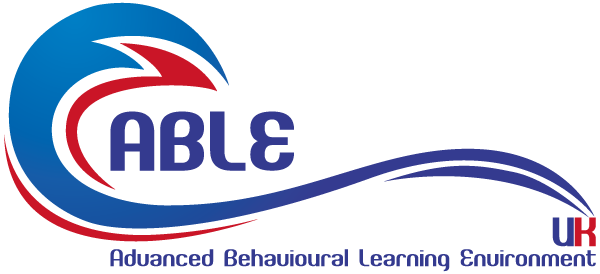Speech therapy is often thought of as something that happens in a clinic or under the watchful eye of a professional therapist. But what if I told you that some of the most effective speech therapy exercises can happen right in the comfort of your home? Yep, that’s right! With a little bit of creativity, patience, and the right activities, you can help your make progress with speech development—all without leaving your living room.
In this article, we’ll explore some fun and engaging speech therapy activities you can easily integrate into your daily routine. These exercises are designed to improve articulation, language skills, and social communication, all while keeping it light and enjoyable. Ready? Let’s dive in!
Why Speech Therapy at Home Matters
Speech therapy at home isn’t about replacing professional guidance. Instead, it’s a way to supplement the work done in therapy sessions. For children, especially, learning new speech skills in a familiar environment can make the process more relaxed and natural. Plus, home is where we spend most of our time, making it the perfect place for practising those essential communication skills.
The key to success with at-home speech therapy is consistency. Short, frequent sessions tend to be more effective than longer, sporadic ones. You don’t need to set aside hours for this; 10 to 15 minutes a day can make a difference.
Speech Therapy Activities You Can Do at Home

Articulation Treasure Hunt
Let’s start with something fun—an articulation treasure hunt. This activity is perfect for children working on specific sounds or speech clarity. Hide small objects around the house that start with the target sound. For example, if your child is working on the “B” sound, you might hide a book. As they find each object, have them say the word aloud.
This game turns articulation practice into an interactive game. By connecting speech practice with movement and exploration, children are more likely to stay engaged and motivated.
Storytelling with Picture Cards
If your child loves stories, this could be a good exercise to accelerate their speech development. Grab a set of picture cards, or a book with lots of pictures, and let your child create a story by describing what they see.
Lay out several picture cards and ask your child to make up a story using the images. For example, a picture of a dog, a tennis ball, and a tree could lead to a tale about a dog playing fetch in the backyard. Storytelling helps build language skills, creativity, and sentence structure. It also encourages children to think critically and organize their thoughts—important skills for both speech and writing.
Echo Play
This is a simple yet effective game that focuses on improving pronunciation and clarity. Sit down with your child and say a word or sentence, then have them repeat it exactly as you said it. You can get creative and use silly voices or different tones to make it fun! For example, say, “The boy went for a swim,” in a high-pitched voice, and see if they can imitate both the words and tone.
Echo play is excellent for children working on articulation and clarity. It encourages careful listening and provides instant feedback as they match your speech patterns.
Picture-to-Word Match
For younger kids or those working on building vocabulary, this activity is a win-win. You’ll need some picture flashcards or toys for this one. Spread out the cards or toys, and say a word. The goal is for your child to point to the picture that matches the word. You can also flip the script and have them say the word when you show them a picture.
This game strengthens vocabulary and reinforces word recognition. Plus, it helps with memory and cognitive development as they match words to objects or pictures.
Sing-Along Sessions
Singing is a fantastic way to work on speech patterns, rhythm, and articulation. This exercise is as simple as picking a song your child enjoys and singing together.
Pick simple, repetitive songs like “Twinkle, Twinkle, Little Star” or “Old MacDonald Had a Farm.” As you sing, emphasize certain words or sounds. You can also pause mid-song and have your child fill in the missing words.
Singing encourages speech in a rhythmic, repetitive way. It’s also a low-pressure activity, making it perfect for children who might feel nervous about traditional speech exercises.
Describe and Guess Game
This one’s like a game of verbal charades. You’ll focus on building descriptive language and communication skills.
Choose an object in the room and describe it without naming it. For example, you might say, “It’s round, and we use it to play soccer.” Your child will then guess the object you’re describing. You can take turns, letting your child describe while you guess, too.
This activity builds descriptive vocabulary and helps children learn how to communicate ideas clearly and concisely. It’s a great way to teach adjectives, verbs, and sentence structure.
Conversation Cards
Social communication is a key area for speech therapy, especially for children who may struggle with conversational skills. Conversation cards are a great way to encourage dialogue and practice the back-and-forth of a natural conversation.
Write prompts or questions on index cards (e.g., “What’s your favourite sport?” or “Tell me about a time you felt happy.”) Shuffle the cards and take turns picking one and answering the question.
This activity teaches children how to initiate, maintain, and end a conversation—essential skills for social communication.
Integrating Speech Therapy into Everyday Life
The beauty of at-home speech therapy is that you can incorporate it into your daily routine without it feeling like a chore. Here are a few ways to seamlessly blend speech therapy into everyday activities:
- Cooking Together: Cooking isn’t just about preparing meals—it’s an excellent opportunity for speech therapy. As you cook, talk about the steps involved, name ingredients, and describe what’s happening. For example, “First, we mix the flour. What’s next?” This encourages conversation and builds vocabulary.
- Bath Time Chats: Bath time is another great opportunity for speech practice. Use this time to name body parts, talk about actions (like washing or splashing), or sing bath-time songs. It’s a relaxing environment that makes learning feel natural.
- Reading Before Bed: Reading is one of the most powerful tools for language development. Make bedtime stories interactive by asking questions about the book, encouraging your child to describe pictures, or predicting what happens next.
- Car Rides: Turn car rides into speech therapy sessions by playing I-spy games, talking about the things you see, or practicing echo play with road signs and billboards.
Speech Therapy FAQs
Can I really do speech therapy at home without a professional?
Yes, but with a caveat. While at-home activities can significantly supplement professional speech therapy, they shouldn’t replace it. Think of it as reinforcing the skills your child is learning during therapy sessions.
How often should I do speech therapy activities at home?
Consistency is key. Aim for short, frequent sessions of about 10 to 15 minutes a day is ideal. You don’t want it to feel overwhelming or like a chore, so keep it light and fun.
What if I don’t know what specific skills my child needs to work on?
Your child’s speech therapist is the best resource for this. They can give you guidance on which areas need the most attention and recommend activities that will target those skills.
Are there any apps that can help with speech therapy at home?
Yes, there are several speech therapy apps designed to engage children with games and exercises. Apps like Speech Blubs, Articulation Station, and Proloquo2Go can be excellent tools to reinforce skills at home.
Can these activities help adults with speech difficulties, too?
Definitely. While some activities may seem geared toward kids, many can be adapted for adults, especially those recovering from a stroke or dealing with other speech issues. Activities like echo play, conversation cards, and storytelling work for all ages.
Speech therapy at home is a wonderful way to complement professional treatment and make speech development part of your everyday life. Whether you’re hunting for hidden objects, singing along to a favourite song, or simply chatting during a car ride, you can turn regular activities into powerful speech therapy exercises. The best part? These activities aren’t just effective—they’re fun!
If you feel you need more support or are looking for professional guidance, you can connect us by visiting https://able.ae/. The combination of professional sessions and consistent at-home practice is the key to unlocking communication skills and helping your child thrive.


One Comment
phpviplink
December 5, 2025 @ 10:32 pmPHPviplink, hmm? Just signed up and the bonuses seem generous! Fingers crossed for some good luck! Give it a shot lads: phpviplink